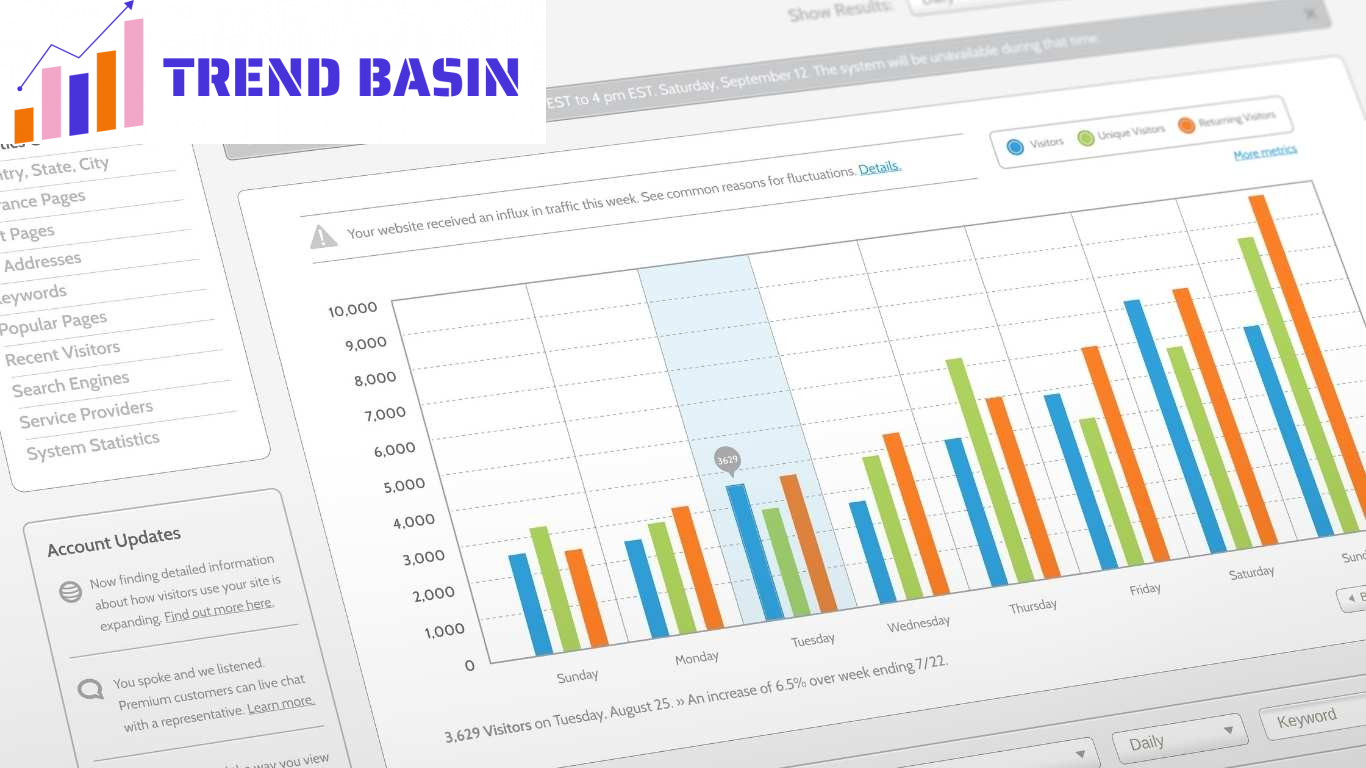The Essentials of Mobile-First Web Design
In today’s digital age, users are more likely to access websites on their smartphones than on desktop computers.
This shift in behavior makes mobile-first web design not just an option but a necessity.
At Trend Basin, we specialize in mobile-first designs that deliver optimal experiences across devices.
By focusing on mobile-first, your website can become more responsive, engaging, and accessible to your audience, regardless of the device they use.
Key takeaways
- Mobile-first design ensures that your website works seamlessly on smaller screens.
- Speed, accessibility, and intuitive navigation are critical components of mobile-first web design.
- Mobile-first design improves both user experience and SEO performance.
- Optimizing images, using responsive design techniques, and testing on various devices are essential for success.
- Mobile-first websites often rank better on Google due to their performance and user-friendly design.
Why is mobile-first web design important?
The mobile-first approach prioritizes mobile users when designing websites, ensuring they have the best possible experience. But why is this so crucial today?
Mobile usage surpasses desktop
Over 58% of global website traffic now comes from mobile devices. Ignoring mobile design is no longer an option. If your website isn’t optimized for mobile, you’re potentially losing more than half of your audience, leading to reduced engagement and lower conversions.
Google’s mobile-first indexing
In 2019, Google officially rolled out mobile-first indexing. This means Google now primarily uses the mobile version of your site for ranking and indexing. Websites that fail to deliver a smooth mobile experience may struggle to achieve high rankings on search engine results pages (SERPs).
Real-world example
In 2016, when BBC News switched to a mobile-first design, they saw a 40% increase in mobile traffic and a substantial improvement in page load times. Their mobile-first strategy not only kept users on the site longer but also improved SEO rankings, demonstrating how mobile-first web design impacts both user experience and business outcomes.
How does mobile-first design improve user experience?
User experience (UX) is the driving force behind web design success. Mobile-first design, by its nature, prioritizes UX by addressing the needs of mobile users first.
Speed and performance
Mobile users are often on the go and have less patience for slow-loading websites. According to Google, 53% of users will abandon a site that takes more than three seconds to load. Mobile-first design encourages designers to reduce the amount of content loaded initially, streamline CSS and JavaScript, and prioritize elements that are essential to user interaction.
Simplified navigation
On smaller screens, users expect easy-to-use, intuitive navigation. This might include hamburger menus, collapsible sections, and clear CTAs that guide users to their desired action. By simplifying the design, you not only make it easier for mobile users to engage with your content but also provide a cleaner, more focused experience for desktop users as well.
Touch-friendly interface
In mobile-first design, all interactive elements—like buttons, links, and forms—must be large enough to easily tap on with a finger. Tiny buttons or links that are difficult to click create a frustrating experience and could cause users to leave your site.
Real-world example
Pinterest applied mobile-first design principles to revamp its interface, leading to a 60% increase in core engagement metrics. By prioritizing load speed and simplifying navigation, they significantly improved their mobile user experience, which drove longer time-on-site and higher conversion rates.
What are the key principles of mobile-first design?
A mobile-first approach starts with thinking small. Instead of designing a desktop version first and then scaling down for mobile, mobile-first design starts with the constraints and challenges of small screens and scales up for larger devices.
1. Prioritize content
Mobile users typically want fast access to key information. Identify the most important content on your site and ensure it’s front and center. Unnecessary elements should be removed or minimized.
2. Responsive typography and layout
Text should be readable on small screens without requiring zooming or scrolling horizontally. Use responsive typography that adjusts based on screen size, and ensure your layout flows vertically for easy navigation.
3. Fast loading times
Use compressed images, lazy loading, and optimize your CSS/JS to ensure your site loads quickly. A study by Google found that as page load time goes from 1 to 5 seconds, the probability of bounce increases by 90%.
4. Fluid grids and flexible images
Instead of using fixed layouts, mobile-first design relies on fluid grids that adjust to screen size. Similarly, images should be scalable, ensuring they don’t overflow the screen or take too long to load on mobile.
5. Minimalist design
Mobile-first design promotes minimalism. By focusing on what’s essential, you can reduce clutter and create a more streamlined, user-friendly experience.
How to optimize images for mobile-first web design?
Images are one of the largest contributors to page load time, so optimizing them is key to improving mobile performance.
1. Use responsive images
Responsive images ensure that the browser serves the appropriate image size for the user’s device. You can use the srcset attribute in HTML to specify different image sizes for different screen resolutions.
2. Compress images
Tools like TinyPNG or ImageOptim can drastically reduce the file size of your images without sacrificing quality. This can significantly improve load times for mobile users.
3. Use modern image formats
WebP is a modern image format that provides superior compression compared to JPEG and PNG. By using WebP, you can reduce image file sizes by up to 34%, which translates to faster loading times.
Real-world example
In a case study by Google, an online fashion retailer optimized their images using WebP, leading to a 35% improvement in mobile load speed. This optimization reduced the bounce rate by 20%, leading to higher sales conversions.
What are the best practices for mobile navigation?
Navigation can make or break a mobile user’s experience. Mobile-first web design takes into account the smaller screen size and the need for easy navigation.
1. Use a hamburger menu
The hamburger menu is a staple of mobile design. It allows for a clean interface while providing easy access to the navigation menu. However, ensure that it’s easily identifiable and positioned at the top of the screen where users expect it.
2. Limit menu items
The fewer the options, the easier it is for users to find what they need. Keep your menu simple, with no more than five primary options. If you need more, use sub-menus.
3. Sticky navigation
Sticky or fixed navigation bars stay at the top of the screen as users scroll. This provides easy access to the menu and key CTAs without requiring the user to scroll back up.
How does mobile-first web design impact SEO?
Mobile-first web design isn’t just about improving UX; it has a direct impact on SEO. Google has shifted to mobile-first indexing, meaning the mobile version of your site is what gets indexed and ranked. A poor mobile experience can result in lower rankings, reduced traffic, and missed opportunities.
1. Improved page speed
As mentioned earlier, faster load times are a key ranking factor. Mobile-first design naturally prioritizes speed, which can help improve rankings.
2. Better user engagement
Bounce rate, time on site, and other engagement metrics are all taken into account by Google’s algorithm. By creating a mobile-first site that keeps users engaged, you’re signaling to Google that your site is valuable, which can result in higher rankings.
3. Mobile-friendly usability
Google’s ranking algorithm also evaluates how easy it is to use your site on mobile. Features like responsive design, large touch targets, and simple navigation all contribute to a mobile-friendly site, which can boost your rankings.
Real-world example
ASOS, a global fashion retailer, improved its mobile site performance and usability. By adopting mobile-first strategies such as optimizing load times and using responsive design, they saw a 10% increase in mobile conversions and improved their SEO ranking.
Case study: Successful mobile-first redesign
In 2016, Bank of America shifted to a mobile-first web design. They optimized their banking portal, focusing on speed, navigation, and mobile-friendly features such as biometric login and instant bill payments. After the redesign, Bank of America saw a significant 45% increase in mobile usage and improved customer satisfaction scores, as well as enhanced SEO rankings.
Conclusion: Prioritize mobile-first to stay ahead
In the era of mobile dominance, designing with mobile-first principles is no longer optional—it’s essential. By focusing on speed, simplicity, and responsiveness, you can create a website that not only performs well on mobile but also improves user experience across all devices.
At Trend Basin, we specialize in mobile-first designs that drive results. Whether you’re looking to revamp your website or build one from scratch, our team can help you create a mobile-friendly site that engages users and boosts conversions.
Stay ahead of the curve by connecting with us on LinkedIn or Facebook for more tips and insights on web design and digital marketing.



